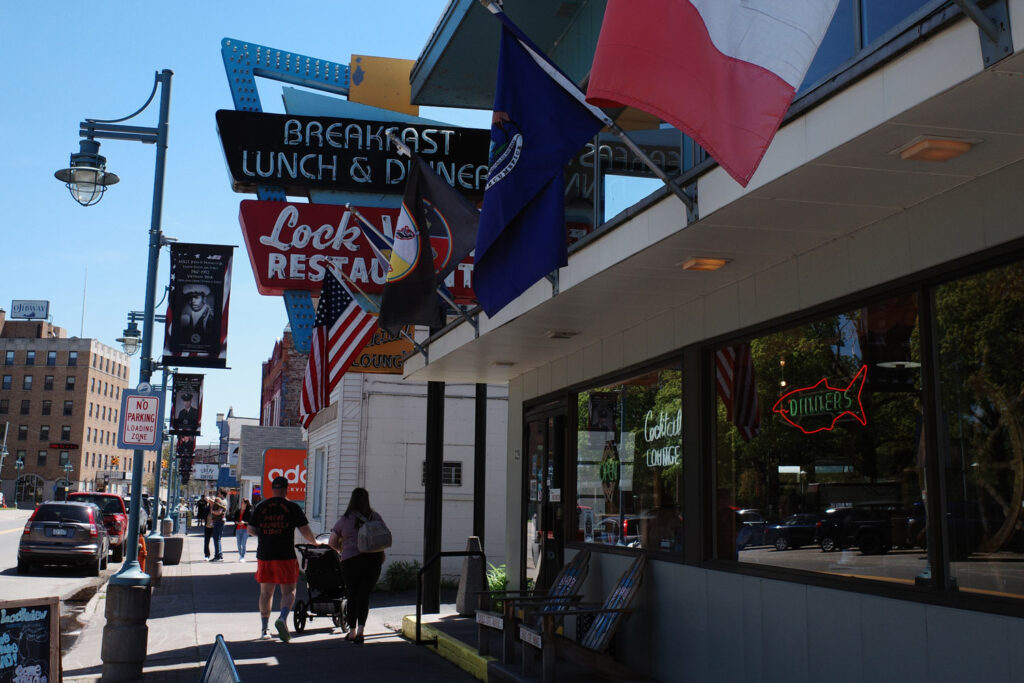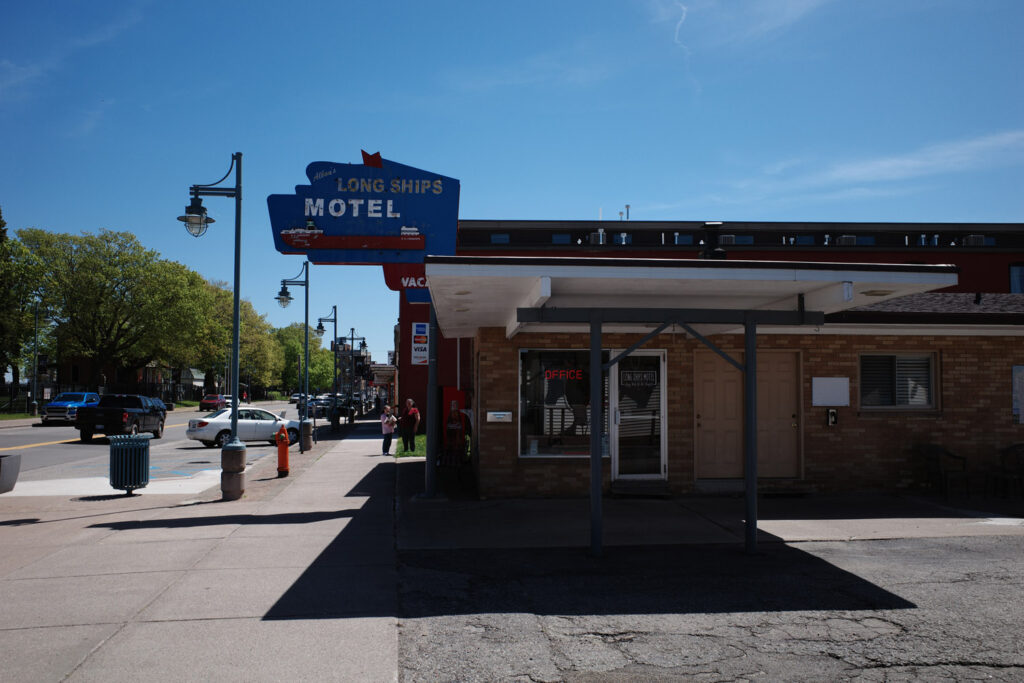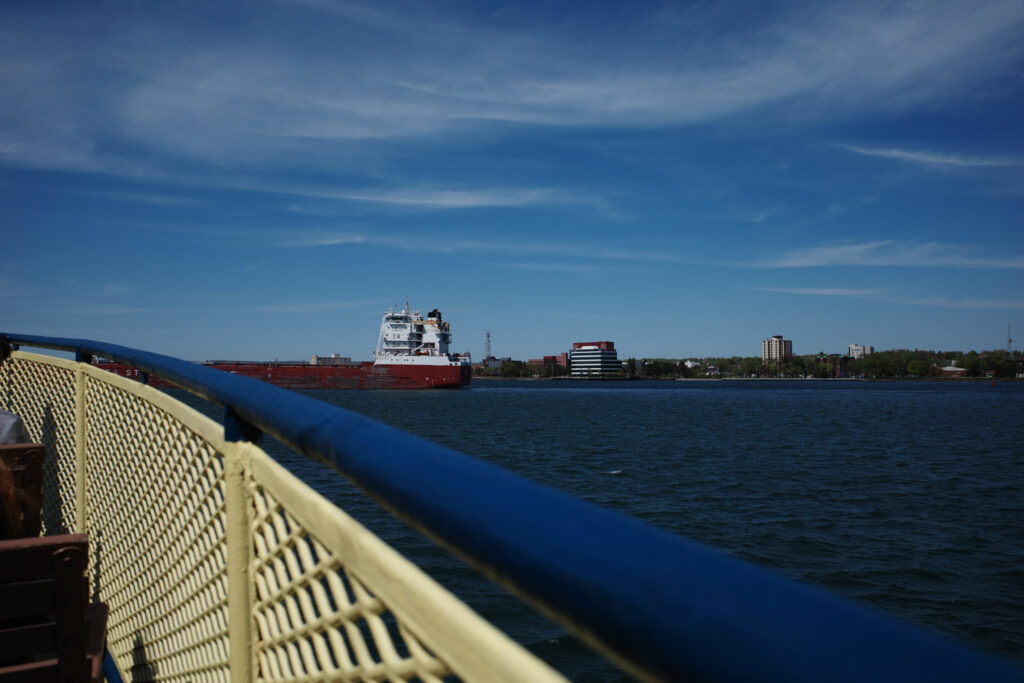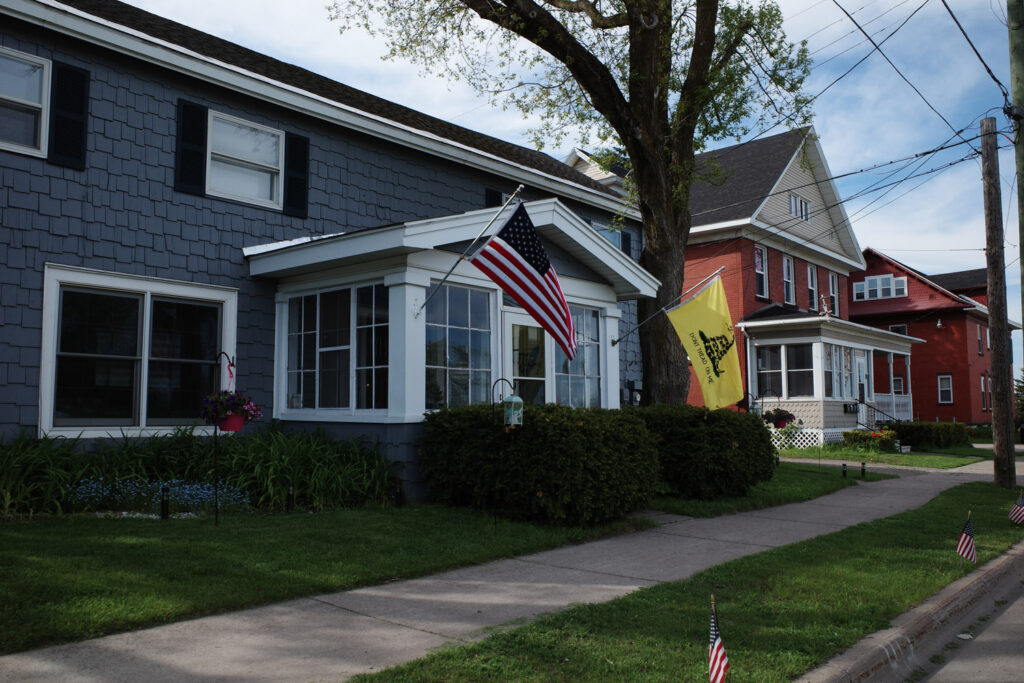Passing Through the Oldest City in Michigan

Sault Ste. Marie is the oldest city in Michigan that isn’t a city. When you hear the word city, you think of a metropolis. Fancy stores. A bunch of restaurants. Lots of traffic. A wide ranging diverse population. A hub of new culture. Where everyone goes. The epicenter of an urban orbit. That’s not Sault Ste. Marie.
You would think the oldest city in Michigan would be big. It isn’t. The Soo (that’s what Yoopers call it) has a population of 13,000 and almost none of the signals of what we consider a city. But it’s not really a small town either. It’s something else. It’s the home of the Soo Locks. Hundreds of massive freighters pass through these locks every year. Without these locks, shipping and industry would be radically different in North America. Sault Ste. Marie is a reminder of cities with purpose. It’s not trendy or polished. It’s not a playground for DINKs (dual income, no kids). It’s work. Rough. Gritty. A place where things pass through.
There isn’t much along the road in the eastern U.P. The Soo pops up out of nowhere, with almost no warning. Black smoke rises from a plant in Canada. I take Exit 394 and am immediately on residential streets. Houses and stop signs. Kids playing outside. A bridge towering above. No traffic. Slow. A few minutes later and I am already downtown on Portage Avenue. The main strip.
Pull over and park. Put some money in the meter. Walk east. It’s kitschy and small town commercial. Goofy tourist stuff. Little stuffed animals and knickknacks. Dads love to see the locks. The shops haven’t been updated in years. It’s heartwarming. The old signs from the before world are no different. There’s rust along the steel. Some of the lights don’t work. No restaurants with stylish, minimalist names like “Knife and Bone” or “27.” You have Moloney’s Alley and Frank’s Place. The Soo looks basically the same as it did 20 years ago.

Weeds grow up from cracks in the pavement of the Long Ships Motel. A mom and daughter stand by the front door. Iconic neon sign buzzes. More vintage neon hangs in front of an old VFW hall built with mid-century brick. An old woman sitting on a chair outside tells me about the breakfast they serve Sundays. Eight bucks. The Motel 7 Seas is right across the street. A rusty relic from another time. A grill sitting on the sidewalk next to the door. You could film a movie set in 1985 right here at this corner without changing a single thing. Walking on, there are tourist shops selling mugs and shirts, maps, and other trinkets. There’s the Yooper Trading Company. Zac & Mac’s Chocolate Haus. Fudge Du Locke. You are, believe it or not, legally required to buy fudge if you visit Northern Michigan. It’s just what you do.
Another vintage sign at the Lock View Restaurant. Yet more neon on an aging frame. It’s comforting and honest. Paper on the front window reads, “Proud Member Sault Tribe Business Alliance.” There’s a big Native American presence here. I head in for a bite. An old church pew with a cross carved on the end. Feels a little like one of those ‘80s movies where the dad takes everyone on a family road trip. There’s a Fred Flintstone car on the sidewalk. It’s a ride for kids. A boy sits down, the mother puts in a coin, and off he goes. The car rocks back and forth. The music plays through a tinny speaker. Flintstones, meet the Flintstones…
There’s an American Sault. Ste Marie and there’s a Canadian Sault. Ste. Marie. The Canadian Sault Ste. Marie is five times bigger than the American one. Our north and their south. People always want to get south. A ferry takes you through the locks and up and down the St. Marys River. We pass a massive freighter and head over toward the Canadian side. Shiny government buildings and new restaurants. We sail into the locks, the doors close behind us; we wait, the water flows, we gradually rise. It goes slow. It’s not an amusement park ride. There’s no splashing. There’s no speed. Yet, it’s incredible. The lockmaster and the crew work silently. No frantic shouting. A few ropes are tossed methodically. A great freighter slowly creeps through another lock. Steady and silent.

Millions of pounds of freight pass through the locks each year, making the modern world possible, for better or worse. That’s a metaphor for Sault Ste. Marie. Someone somewhere has to get the thing from Point A to Point B; we can’t run on vibes alone. This thankless task happens here.
Back on the dock. A massive brutalist concrete tower in the distance. Stark and foreboding. Very modern. It’s the Tower of History. This 200-foot relic was built in the late ‘60s by St. Mary’s Catholic Church as a shrine to the missionaries in the U.P. There’s a museum and observation decks. Standing on I-75 looking east, the modern concrete obelisk rises high above the Holy Name of Mary Catholic Church one block away. The traditional spire of a cathedral in the shadow of a hulking concrete tower, both inspired by faith. Missionaries in the distant hinterland of a new world. A hub of transportation and shipping. A gateway to the future.

Bold beautiful old wood houses of the main drag. They aren’t kept up perfectly, but they are kept up enough. There’s Lake Superior State University here, but it’s not a college town. I pass a house with a MAGA flag, another with the black POW MIA, a third with the Gadsden flag.
If you look out toward the horizon, you might see a freighter slowly creeping across Lake Superior. You’re looking at the modern world, although you might not realize it. It’s not on its way to Ann Arbor or Detroit. It’s on its way to Sault Ste. Marie.
O.W. Root is a writer based in Northern Michigan, with a focus on nature, food, style, and culture. Follow him on X at @NecktieSalvage.